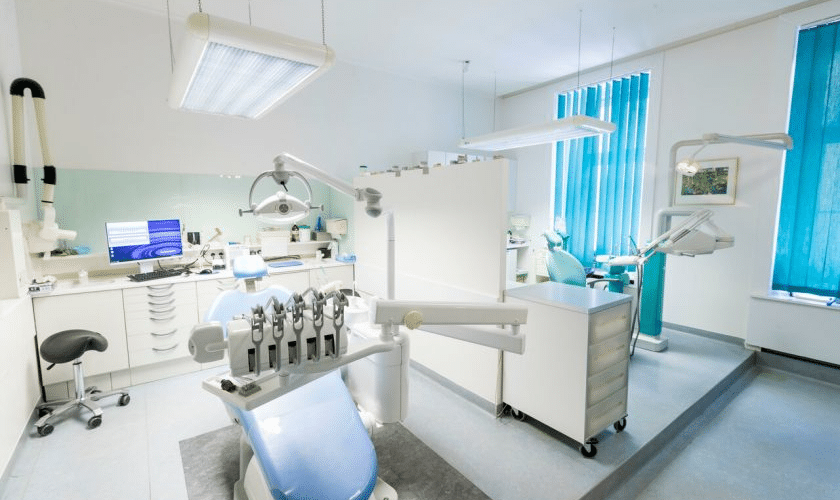Sudden dental emergencies strike unexpectedly in a world fraught with unpredictability. Whether it’s an agonizing toothache or a sudden oral injury, swift treatment becomes imperative, and this is where the Dental Emergency services prove invaluable. Beyond their typical medical focus, these emergency facilities are equipped to address acute dental distress, offering rapid solutions to alleviate pain and safeguard your oral health. This exploration delves into the pivotal role of Dental Emergency services in managing oral health crises, providing a guide for individuals seeking immediate relief when faced with unforeseen tooth problems.
Understanding Dental Emergencies:
Dental crises, ranging from acute toothaches to more serious conditions such as jaw injuries or abscesses, need rapid treatment to alleviate pain, prevent infection, and protect oral health. A dentist best handles these crises during regular office hours, but after hours, the dental emergency room (ER) is required. Toothaches, fractured teeth, cracked-out teeth, missing fillings or crowns, broken orthodontics, abscesses, bleeding and discomfort following tooth extraction, and the usage of a mouthguard are all common dental emergencies. In general, any dental disease that needs rapid care is classified as a dental emergency.
What To Expect At The ER:
Dental crises are sometimes overlooked, yet emergency rooms (ERs) are equipped to address a wide range of medical situations, including those concerning oral health. When medical personnel arrive, they assess the severity of the condition and administer pain treatment, antibiotics, and emergency solutions. Severe tooth pain should be treated every once, but it is considered an emergency if it is severe or is accompanied by fever, swelling, or difficulty breathing. Regular ER room healthcare experts evaluate symptoms and treat pain and related symptoms, perhaps giving medicine or antibiotics to treat the infection. If the pain is extreme or is accompanied by other symptoms, it is critical to seek dental emergency treatment.
Handling Specific Dental Emergencies:
Toothaches:
Pain might signal dental decay, and swelling requires immediate attention. Use a cold compress instead of typical pain relievers. Seek emergency dental care at a dental facility. To avoid cavities and decay, stress oral cleanliness. Pain treatment and medicines can be obtained from the emergency department (ER).
Knocked-Out Tooth:
When dealing with a knocked-out tooth, carefully rinse it and avoid scrubbing or removing tissue bits. Replace the tooth within an hour, preferably within an hour. It is considered a dental emergency. If this is not feasible, keep it in milk or water with a bit of salt. Because time is of the essence for effective re-implantation, rinse carefully and, if feasible, replace the tooth in its socket.
Broken Teeth:
Biting down on hard meals or participating in sports can cause tooth injury, resulting in bleeding and discomfort. To minimize swelling, rinse your mouth with warm water, use gauze, and apply a cold compress. For immediate relief, seek dental emergency care, but long-term remedies and cosmetic fixes necessitate follow-up care with a dentist.
Abscesses And Infections:
Infections in the mouth, particularly around tooth roots or gum gaps, have the potential to spread to neighboring teeth and the body. Examine your gums for swollen areas and make an appointment with a dental facility for emergency treatment. Infections are treated in emergency rooms with antibiotics and drainage, but follow-up treatment is essential to address the underlying causes and avoid recurrence.
The Value Of Prompt Action:
In the case of a dental emergency, speed is of the essence. When faced with a dental emergency, quick action might be the difference between alleviating pain, averting complications, and maintaining oral health. Immediate care in an Emergency Room provides prompt intervention, preventing concerns from escalating and causing permanent damage. Understanding the severity of these circumstances enables people to prioritize their well-being, recognizing that quick intervention is the key to faster and more successful treatment of dental crises.
The Emergency Room appears as a reliable ally in the unpredictable drama of dental emergencies, providing instant relief and laying the road for following dental treatment. Swift action becomes the key, stopping pain from escalating into protracted suffering and avoiding dangerous problems. Remember, the ER isn’t only a haven for medical emergencies; it’s also a shelter for dental distress. Armed with this knowledge, individuals may confidently negotiate unforeseen oral health difficulties, ensuring that their smiles survive and are robust in the face of unexpected hardship.
